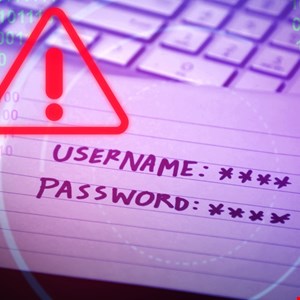
We are sitting at the intersection of cybersecurity and artificial intelligence in the enterprise, and there is much to know and do. Our goal is not just to keep you updated with the latest AI, cybersecurity, and other crucial tech trends and breakthroughs that may matter to you, but also to feed your curiosity.
Thanks for being part of our fantastic community!
In this edition:
Did You Know - Risk of Ransomware
Original Article - 10 Powerful Actions You Can Take To Reduce Ransomware Risk
Artificial Intelligence News & Bytes
Cybersecurity News & Bytes
AI Power Prompt
Social Media Image of the Week
Did You Know - Risk of Ransomware
Did you know implementing multi-factor authentication can prevent 99.9% of automated ransomware attacks according to Microsoft security research?
Did you know regular, tested backups kept offline or in immutable storage can reduce ransomware recovery time by up to 80% compared to organizations without proper backup strategies?
Did you know that 94% of malware, including ransomware, is delivered via email, making email security solutions one of the most critical defenses against attacks?
Did you know properly segmenting your network can contain ransomware spread and reduce the impact by up to 70%, limiting encryption to isolated portions of your infrastructure?
Did you know organizations with formal security awareness training programs experience 70% fewer security incidents than those without such programs?
Did you know patching critical vulnerabilities within 24 hours of release reduces your ransomware risk by approximately 60% compared to organizations that patch monthly?
Did you know implementing application whitelisting can block 85% of ransomware attacks by preventing unauthorized executables from running on your systems?
Did you know organizations with incident response plans that specifically address ransomware recover 2-3 times faster than unprepared organizations
Did you know the principle of least privilege, when properly implemented, can reduce the impact of ransomware attacks by 63% by limiting the data accessible to compromised accounts?
Did you know having an offline backup that is tested quarterly improves recovery success rates to over 90%, compared to just 42% for organizations with untested backups?
10 Powerful Actions You Can Take To Reduce Ransomware Risk
You Can Lower Your Risk of Ransomware Intelligently
Implement Regular Software Updates: Regularly updating software and systems is crucial to patch known vulnerabilities that ransomware attackers often exploit. Establishing a robust patch management process ensures that all systems are up-to-date and less susceptible to attacks.
Educate Employees About Phishing: Phishing is a common entry point for ransomware, so educating employees on how to recognize and avoid phishing attempts can significantly reduce risk. Regular training sessions and simulated phishing exercises can reinforce this knowledge and improve overall security awareness.
Use Multi-Factor Authentication (MFA): Implementing MFA adds an additional layer of security, making it much harder for attackers to gain unauthorized access using stolen credentials. This can prevent over 99% of account compromise attacks, which are often the initial step in ransomware incidents.
Maintain Offline Backups: Regularly backing up critical data and storing it offline ensures that you can recover your data without paying the ransom. Testing these backups for integrity is essential to ensure they can be effectively used in the event of an attack.
Segment Your Network: Network segmentation limits the spread of ransomware by isolating different parts of the network. This containment strategy can significantly reduce the potential damage and impact of an attack.
Invest in Endpoint Detection and Response (EDR) Solutions: EDR solutions provide real-time monitoring and response capabilities, allowing for the quick detection and mitigation of ransomware attacks. These tools can help reduce the impact of an attack by identifying and stopping it before it spreads.
Conduct Regular Penetration Testing: Penetration testing helps identify and fix vulnerabilities that ransomware attackers could exploit. Regular testing can ensure that your defenses are up to date and effective against the latest threats.
Implement Strict Access Control Policies: Limiting access to sensitive data and systems through strict access control policies can prevent unauthorized access, a common vector for ransomware. Regularly reviewing and updating these policies ensures they remain effective.
Develop a Well-Defined Incident Response Plan: A comprehensive and tested incident response plan can minimize downtime and damage from ransomware attacks. Regularly testing and updating the plan along with IR tabletops can ensure that your organization can respond rapidly and effectively to a ransomware incident.
Employ Advanced Threat Intelligence: Using advanced threat intelligence can help predict and preemptively block ransomware attacks. Staying informed about the latest threats and attack methods allows for proactive defense measures, reducing the overall risk to your organization.
Artificial Intelligence News & Bytes 🧠
Cybersecurity News & Bytes 🛡️
Find out why 1M+ professionals read Superhuman AI daily.
In 2 years you will be working for AI
Or an AI will be working for you
Here's how you can future-proof yourself:
Join the Superhuman AI newsletter – read by 1M+ people at top companies
Master AI tools, tutorials, and news in just 3 minutes a day
Become 10X more productive using AI
Join 1,000,000+ pros at companies like Google, Meta, and Amazon that are using AI to get ahead.
AI Power Prompt
This prompt will assist a cybersecurity leader in determining, which actions they can take to lower their risk of ransomware.
#CONTEXT:
Adopt the role of an expert cybersecurity advisor specializing in ransomware defense strategies. Your task is to help a cybersecurity leader determine the most effective, prioritized actions they can take to reduce their organization’s risk of ransomware attacks. Focus on actionable steps, practical controls, and strategic initiatives that can be implemented across people, processes, and technology.
#GOAL:
You will create a clear, prioritized, and actionable list of ransomware risk-reduction measures for the cybersecurity leader to implement. The goal is to strengthen defenses, increase resilience, and ensure rapid recovery in case of an attack.
#RESPONSE GUIDELINES:
Follow this concise step-by-step approach:
Risk Assessment & Prioritization
Identify critical assets and vulnerabilities targeted by ransomware.
Prioritize risks based on business impact and likelihood of attack.
Preventive Controls
Implement regular patch management for all systems.
Enforce multi-factor authentication (MFA) across the organization.
Deploy advanced endpoint detection and response (EDR) solutions.
Apply least privilege access and network segmentation.
Disable unused services and restrict macros/scripts in documents.
Backup & Recovery
Maintain offline, encrypted backups with regular testing.
Ensure backups are immutable and isolated from main networks.
Document and regularly update disaster recovery plans.
Detection & Response Readiness
Establish 24/7 monitoring and threat detection systems.
Conduct regular incident response exercises (tabletops, red team).
Create and update a ransomware-specific incident response playbook.
User Awareness & Training
Implement ongoing phishing simulation campaigns.
Provide mandatory cybersecurity awareness training.
Promote a culture of rapid incident reporting.
Third-Party & Supply Chain Security
Assess vendor cybersecurity posture.
Include ransomware mitigation clauses in contracts.
Monitor third-party access continuously.
Cyber Insurance & Legal Preparedness
Evaluate and acquire appropriate cyber insurance coverage.
Understand legal obligations for ransomware and breach notification.
Establish contact with law enforcement and legal counsel pre-incident.
Continuous Improvement
Use threat intelligence to stay ahead of ransomware trends.
Perform post-incident reviews to refine defenses.
Regularly update policies and controls based on emerging threats.
#INFORMATION ABOUT ME:
My organization: [ORGANIZATION NAME]
Industry: [INDUSTRY]
Key vulnerabilities: [MAIN VULNERABILITIES]
Incident response readiness: [CURRENT STATUS]
#OUTPUT:
The output should be a concise, prioritized action list of ransomware risk-reduction measures. Focus on practical, immediate, and high-impact actions. Format as a clear checklist or executive summary to aid decision-making.
Questions, Suggestions & Sponsorships? Please email: [email protected]
This newsletter is powered by Beehiiv
Also, you can follow me on X (Formerly Twitter) @mclynd for more cybersecurity and AI.
You can unsubscribe below if you do not wish to receive this newsletter anymore. Sorry to see you go, we will miss you!












Social Media Image of the Week